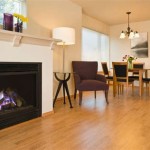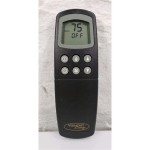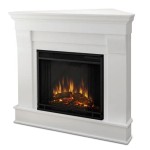Gas Wall Heaters That Look Like Fireplaces: A Detailed Examination
Gas wall heaters that mimic the appearance of traditional fireplaces offer a compelling solution for homeowners seeking supplemental heating without the hassle and mess associated with wood-burning alternatives. These appliances combine the aesthetic appeal of a fireplace with the convenience and efficiency of gas-powered heating. This article will explore the various aspects of these heaters, including their benefits, design features, installation considerations, and maintenance requirements. The aim is to provide prospective buyers with a comprehensive understanding of what to consider before investing in a gas wall heater that resembles a fireplace.
Aesthetic Appeal and Design Variety
The primary draw for many individuals considering these heaters is their aesthetic value. Manufacturers understand the desire for a visually appealing heating source and offer a wide array of designs to complement various home décor styles. Traditional designs often incorporate elements that resemble classic wood-burning fireplaces, such as realistic-looking logs, brick-patterned fireboxes, and decorative mantels. Contemporary designs, on the other hand, might feature sleek lines, minimalist aesthetics, and glass fronts for a modern touch. The emphasis on visual appeal ensures that these heaters not only provide warmth but also enhance the overall ambiance of the room.
Beyond the overall style, specific design elements contribute to the fireplace-like appearance. The flame presentation is a critical factor, and manufacturers employ various technologies to create realistic and visually engaging flames. Some models use advanced burner systems to produce tall, flickering flames that mimic the movement of a natural fire. Others incorporate ember beds that glow and pulsate, further enhancing the realism. The quality of the artificial logs is also important. High-quality logs are typically made from durable, heat-resistant materials and are carefully molded to resemble real wood, complete with realistic textures and grain patterns. The use of decorative accents, such as decorative grates or fire screens, can further enhance the fireplace aesthetic.
Furthermore, the option to customize certain design elements allows homeowners to tailor the heater to their specific preferences. Some models offer a choice of firebox liners, allowing buyers to select a brick pattern, a reflective surface, or a solid color. Similarly, the option to choose from different mantel styles and finishes allows for further personalization. This level of customization ensures that the gas wall heater seamlessly integrates into the existing décor and reflects the homeowner's individual taste.
The availability of various sizes and configurations is another important aspect of design variety. Gas wall heaters that look like fireplaces are available in a range of sizes, from compact models suitable for smaller rooms to larger units capable of heating larger spaces. Some models are designed for corner installation, while others are intended for mounting on a flat wall. The availability of different configurations ensures that there is a suitable option for virtually any room layout.
Heating Efficiency and Operational Considerations
Beyond their aesthetic appeal, gas wall heaters offer practical benefits in terms of heating efficiency and operational convenience. Compared to traditional wood-burning fireplaces, gas heaters are significantly more efficient, converting a higher percentage of fuel into usable heat. This increased efficiency translates to lower heating costs and reduced environmental impact. Modern gas wall heaters are often equipped with features that further enhance their efficiency, such as programmable thermostats and modulating burners.
Programmable thermostats allow homeowners to set specific heating schedules, ensuring that the heater only operates when needed. This feature can significantly reduce energy consumption and heating costs, particularly for individuals who have predictable daily routines. Modulating burners automatically adjust the gas input based on the heating demand, providing precise temperature control and minimizing energy waste. These advanced features contribute to the overall energy efficiency and operational cost-effectiveness of gas wall heaters.
The ease of operation is another significant advantage of gas wall heaters. Unlike wood-burning fireplaces, gas heaters do not require the handling of firewood, the building of a fire, or the removal of ashes. They can be easily turned on and off with the flip of a switch or the press of a button on a remote control. This convenience makes gas wall heaters a practical choice for individuals who want supplemental heating without the hassle and mess associated with traditional fireplaces. Furthermore, many models are equipped with safety features such as automatic shut-off mechanisms and oxygen depletion sensors, ensuring safe and reliable operation.
The choice between natural gas and propane as a fuel source is an important consideration. Natural gas is typically a more cost-effective option if a natural gas line is already available at the property. Propane, on the other hand, offers greater flexibility in terms of installation, as it does not require a connection to a natural gas line. Propane tanks can be stored remotely, allowing for installation in areas where natural gas is not available. The choice between natural gas and propane depends on the individual's specific circumstances and preferences. It's essential to consider the cost of fuel, the availability of fuel supply, and the installation requirements when making this decision.
Installation and Safety Requirements
Proper installation is crucial for ensuring the safe and efficient operation of a gas wall heater. It is highly recommended to hire a qualified and licensed professional to install these appliances. Improper installation can lead to gas leaks, carbon monoxide poisoning, and other safety hazards. A professional installer will have the knowledge and experience necessary to ensure that the heater is installed correctly and in accordance with all applicable building codes and safety regulations.
The installation process typically involves connecting the heater to a gas supply line, venting the exhaust gases to the outside, and securing the heater to the wall. The venting system must be properly designed and installed to ensure that exhaust gases are safely and effectively removed from the room. Depending on the type of heater and the building's construction, various venting options may be available, including direct vent, B-vent, and vent-free systems. Direct vent systems are generally considered the safest option, as they draw combustion air from outside and vent exhaust gases directly to the outside, preventing the possibility of indoor air contamination.
Building codes and safety regulations vary depending on the location. It is essential to check with local authorities to determine the specific requirements for installing a gas wall heater. These requirements may include minimum clearance distances from combustible materials, ventilation requirements, and carbon monoxide detector requirements. Compliance with these regulations is crucial for ensuring the safety of the occupants and preventing potential hazards.
Regular maintenance is also necessary to ensure the safe and efficient operation of a gas wall heater. This includes cleaning the burner system, inspecting the venting system, and checking for any signs of damage or wear. A qualified technician should perform a thorough inspection and maintenance of the heater at least once a year. Regular maintenance can help prevent problems, extend the life of the heater, and ensure that it operates safely and efficiently.
Carbon monoxide detectors are essential for protecting against carbon monoxide poisoning. Carbon monoxide is a colorless, odorless gas that can be produced by improperly functioning gas appliances. Exposure to high levels of carbon monoxide can be fatal. Carbon monoxide detectors should be installed in accordance with the manufacturer's instructions and should be tested regularly to ensure that they are functioning properly. It is also important to educate all members of the household about the dangers of carbon monoxide and the symptoms of carbon monoxide poisoning.
In conclusion, gas wall heaters that look like fireplaces can be a valuable addition to any home, offering both aesthetic appeal and practical heating benefits. By carefully considering the design options, operational considerations, installation requirements, and safety precautions, homeowners can make an informed decision and enjoy the warmth and ambiance of a fireplace without the hassles and mess of traditional wood-burning alternatives. This type of heater can create a comfortable atmosphere within a home making it a more appealing alternative to standard heating systems.

Duluth Forge 28 In 26 000 Btu Ventless Linear Wall Gas Fireplace With Thermostat Black 110037 The Home Depot

Contemporary Wall Mounted Gas Stove Hi Fire Ligero Thermocet Bv Small Fireplace Tv

Vintage Mantle With Gas Heater Repurposed Propane Wall Heaters Fake Fireplace
Replace Older Space Heaters With Decorative Gas Log Flame Fires From Rinnai Architecture Design

Gas Fires Log Regency Fireplaces

Dyna Glo Part Bfss20ngt 4n 20 000 Btu Blue Flame Vent Free Natural Gas Thermostatic Wall Heater Unit Heaters Home Depot Pro

Gas Fireplaces Offer Efficient Heating Choices

Duluth Forge 28 In 26 000 Btu Ventless Linear Wall Gas Fireplace With Thermostat Black 110037 The Home Depot

Dwarf Gas Fireplace Heater Tiny Wood Stove
Replace Older Space Heaters With Decorative Gas Log Flame Fires From Rinnai Architecture Design
Related Posts








